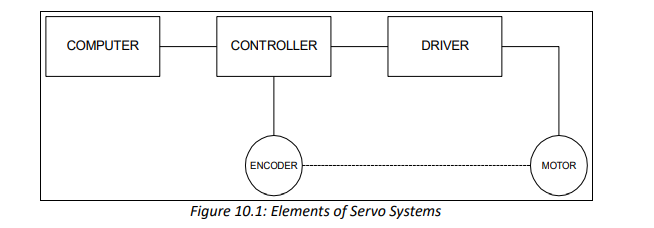I am still trying to wrap my head around what is needed for this CNC work and I do not want to waste money buying items I do not need. I do not have access to machines that I can look at and learn the process of cnc.
I am looking at buying some Fanuc servos. They were from a welding robot. I have to assume there are controllers for making the servos do their work, but they are not part of the lot.
Fanuc A06B-0371-B075 a1/3000 AC Servo Motor 90 V 0.3 kW
Fanuc A06B-0371-B175 a1/3000 AC Servo Motor 90 V 0.3 kW
Fanuc A06B-0123-B175 a3/3000 AC Servo Motor 127 V 0.9 kW
Fanuc A06B-0162-B075 aM6/3000 AC Servo Motor 144 V 1.4 kW
There are three different voltages so I believe there must be a way to change mains to the required voltage. Either individual transformers or a single transformer with multiple taps. There were a couple 3.0 KVA transformers in the lot. There are motors and there is a way to get the proper voltage at the proper power.
What's missing, is the way to control the motors. Do the controllers have to be specific Fanuc controllers? Or can they be of any manufacturer as long as they can provide the proper voltage and power?
Also, there must be a way of coordinating the controller timing, right? Is this the computer or is it a intermediary device that interprets what the computer is telling the cnc system?
I am looking at buying some Fanuc servos. They were from a welding robot. I have to assume there are controllers for making the servos do their work, but they are not part of the lot.
Fanuc A06B-0371-B075 a1/3000 AC Servo Motor 90 V 0.3 kW
Fanuc A06B-0371-B175 a1/3000 AC Servo Motor 90 V 0.3 kW
Fanuc A06B-0123-B175 a3/3000 AC Servo Motor 127 V 0.9 kW
Fanuc A06B-0162-B075 aM6/3000 AC Servo Motor 144 V 1.4 kW
There are three different voltages so I believe there must be a way to change mains to the required voltage. Either individual transformers or a single transformer with multiple taps. There were a couple 3.0 KVA transformers in the lot. There are motors and there is a way to get the proper voltage at the proper power.
What's missing, is the way to control the motors. Do the controllers have to be specific Fanuc controllers? Or can they be of any manufacturer as long as they can provide the proper voltage and power?
Also, there must be a way of coordinating the controller timing, right? Is this the computer or is it a intermediary device that interprets what the computer is telling the cnc system?


